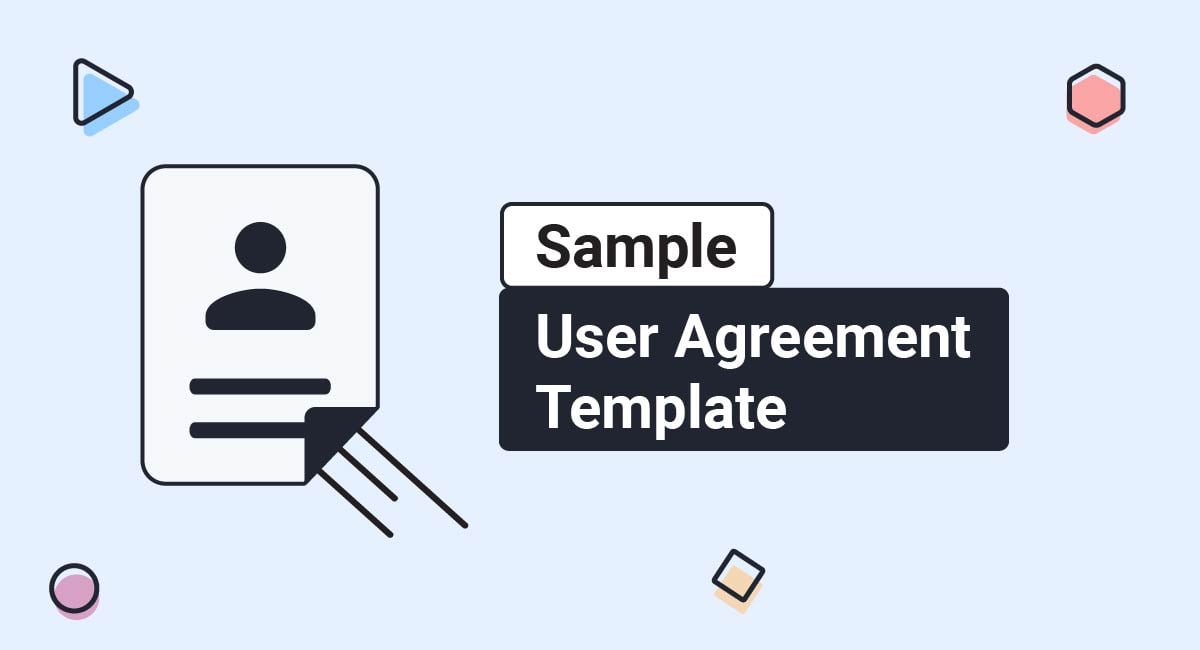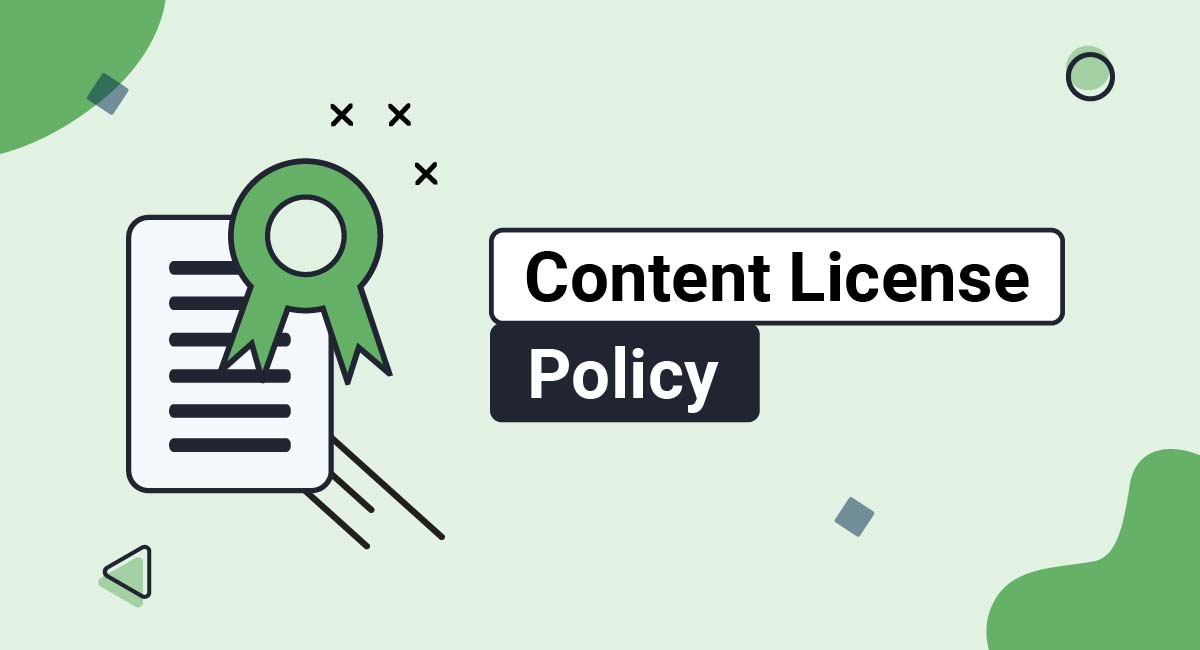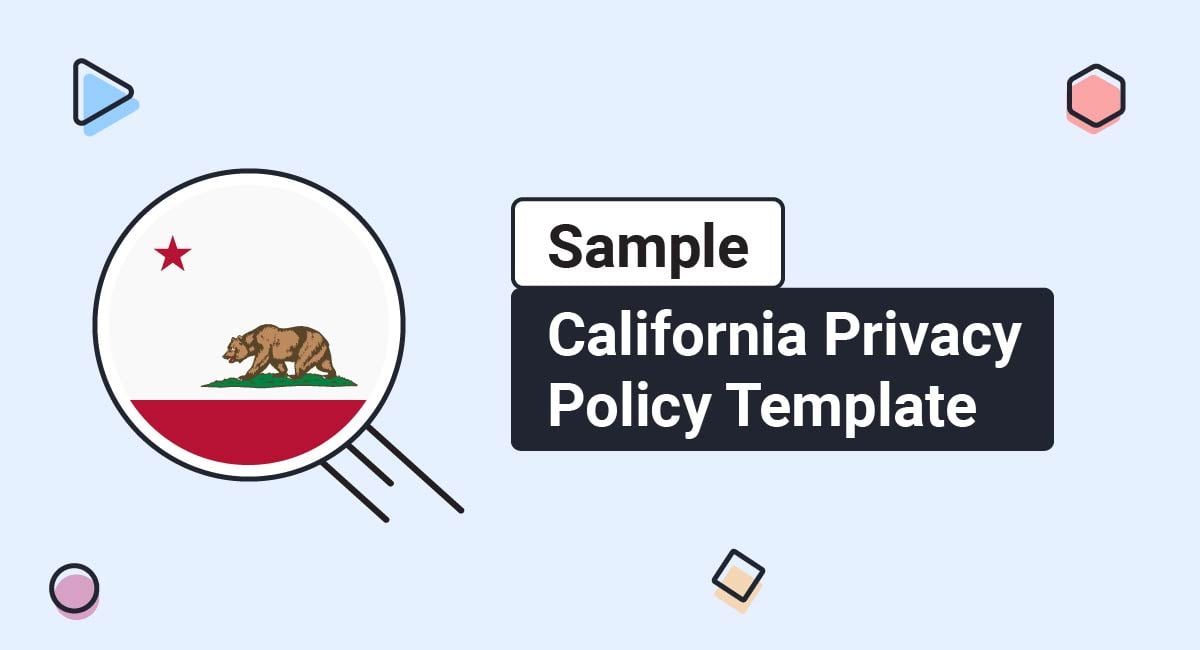A properly written User Agreement can help provide legal protection for your business as well as inform users about their rights and responsibilities when using your website, apps, products, or services.
This article goes over everything you need to know about User Agreements, including why you should have a User Agreement, clauses that your User Agreement should include, and how to create your own User Agreement.
Our Terms and Conditions Generator makes it easy to create a Terms and Conditions agreement for your business. Just follow these steps:
-
At Step 1, select the Website option or the App option or both.
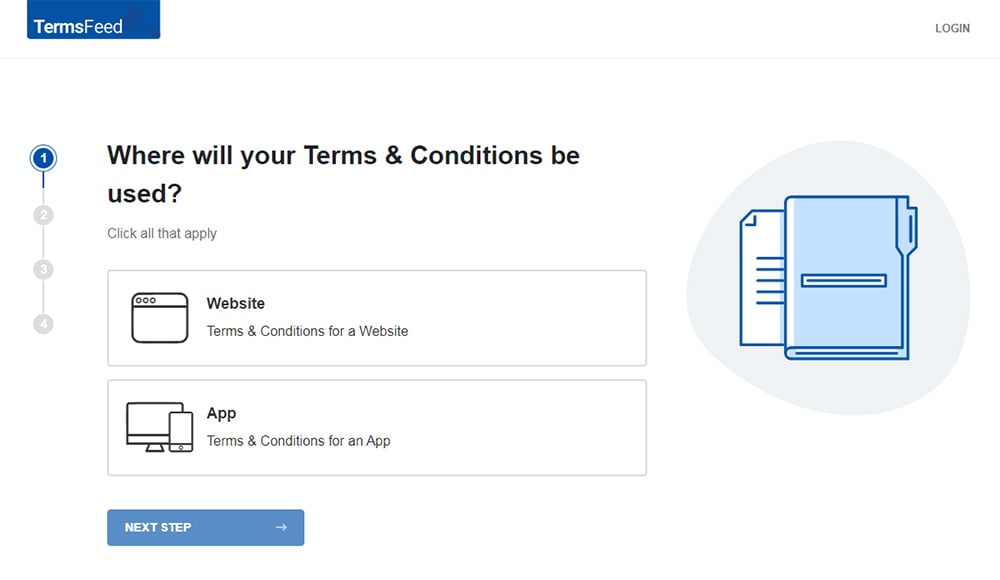
-
Answer some questions about your website or app.
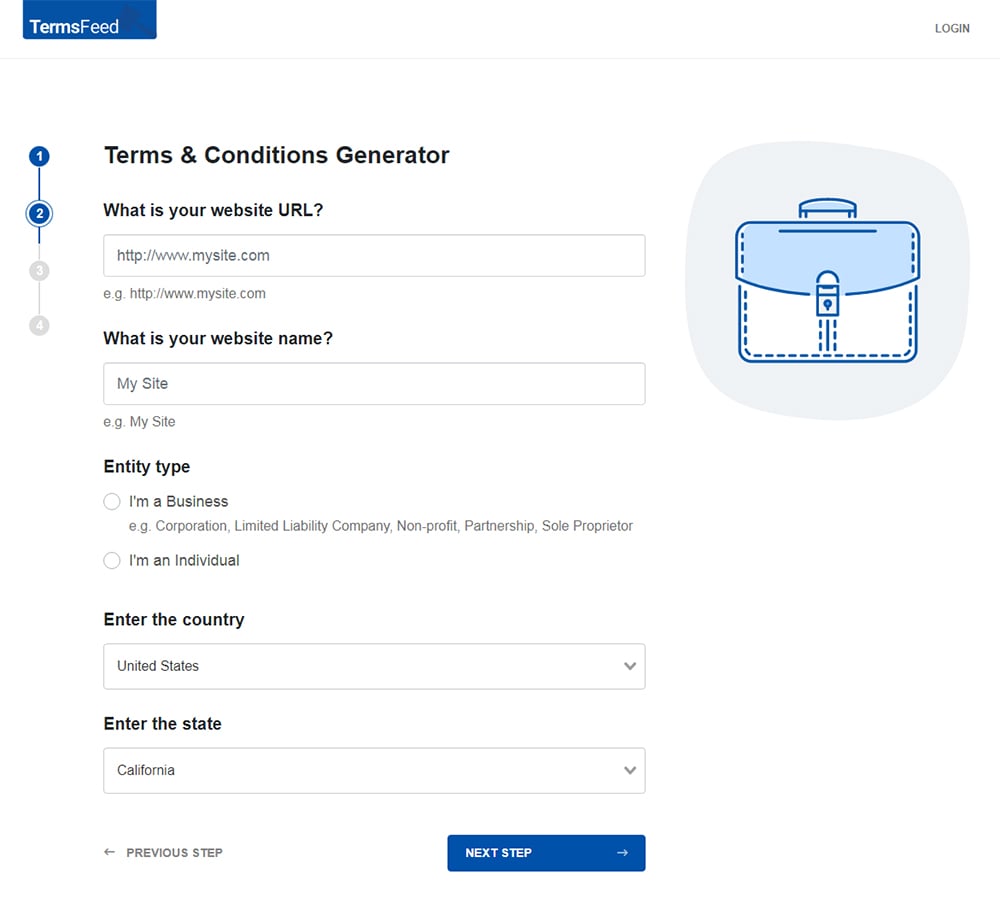
-
Answer some questions about your business.
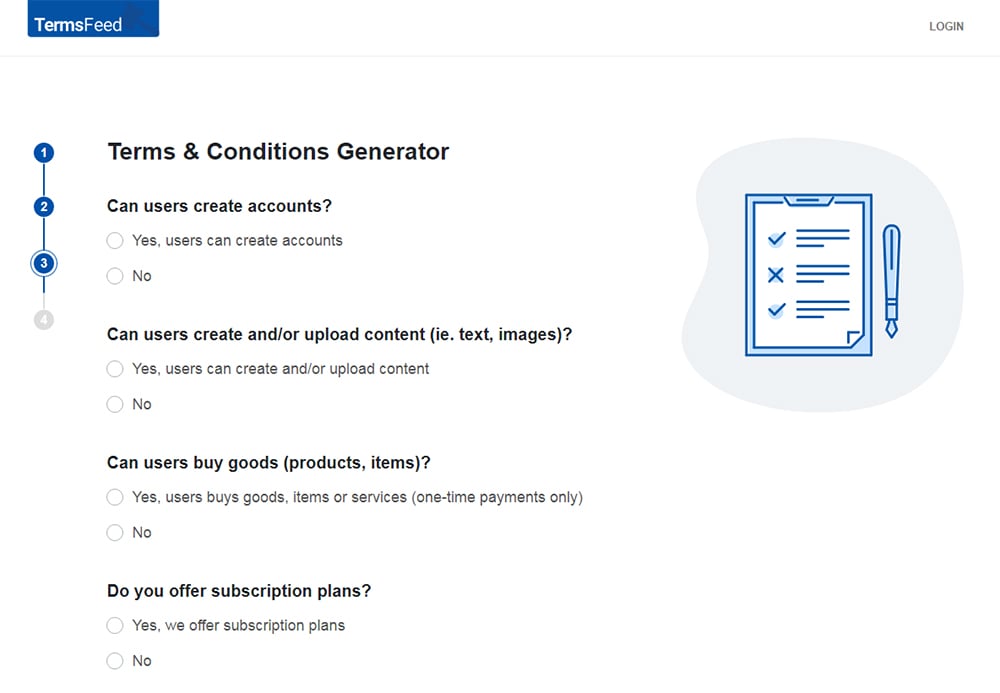
-
Enter the email address where you'd like the T&C delivered and click "Generate."
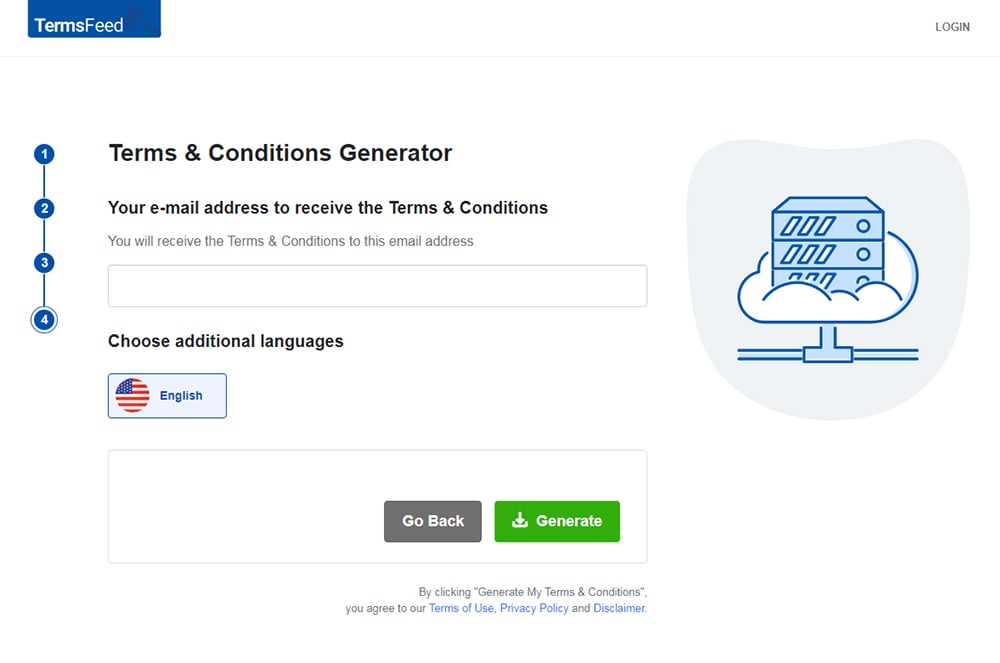
You'll be able to instantly access and download the Terms & Conditions agreement.
- 1. What is a User Agreement?
- 2. Why You Need a User Agreement
- 3. How to Create Your Own User Agreement
- 4. Clauses That Your User Agreement Should Include
- 4.1. Your Rules and Restrictions
- 4.2. Breach of Contract
- 4.3. Choice of Law
- 4.4. Your Contact Information
- 4.5. Device Licensing Requirements
- 4.6. Limitations of Liability
- 4.7. Payments
- 4.8. Returns and Refunds
- 4.9. Termination
- 4.10. Rights After Termination of Contract
- 4.11. Security of Data
- 4.12. Warranty Disclaimer
- 5. Displaying and Getting Users to Agree to Your User Agreement
- 5.1. Website Footer
- 5.2. Account Sign-Up Pages
- 5.3. Mobile and Desktop Apps
- 6. Summary
What is a User Agreement?
A User Agreement is a legally binding contract between you and the people who use your website. It contains clauses that inform your users what exactly they need to agree to in order to use your website or services, and lets users know what their rights are concerning their personal information.
A User Agreement should be written in a way that is easy for users to read and understand and should contain clauses that are specific to your business.
A User Agreement and a Terms and Conditions agreement contain much of the same content and operate with the same purpose. The key difference is in how they're titled, and the fact that a User Agreement is usually used in place of a Terms and Conditions agreement on websites that have more user-generated content (UGC).
UGC is just what the name describes: Content that is created by users of your website. UGC can come in various forms, including images, videos, comments, social media posts, memes, reviews, and testimonials.
Why You Need a User Agreement

A User Agreement serves the purpose of protecting your business and letting users know what behavior they need to agree to in order to use your website, apps, or other products and services.
Maintaining an up to date User Agreement can help to build trust with your consumers, as well as provide a way for users to contact you with any questions, concerns, or requests.
A User Agreement can also be used to explain software licensing to users and let them know what happens if the contract is breached.
Any business that sells products or services online, uses copyrighted software, provides software for public usage, or maintains a platform that allows UGC, should have a User Agreement somewhere easily accessible on its website.
How to Create Your Own User Agreement

Your User Agreement should be written to meet your specific needs, which is why it's important to not try to copy and paste someone else's User Agreement for use on your website.
You can always write your own User Agreement, but it will take time and extensive research to ensure that you are using the right language and including the necessary clauses in order to provide your business with adequate legal protection.
A simple way to create an effective User Agreement is to use a legal document generator or template, such as the ones that TermsFeed provides.
TermsFeed's generator will guide you through a series of questions that will help you to add appropriate clauses to your Agreement that will meet your needs and help you to cover your legal bases.
You can also download our free customizable agreement template to help you create your own.
Clauses That Your User Agreement Should Include

Whether you use a legal document generator or template to create your User Agreement or choose to write your own fully from scratch, there are a few important clauses that you should make sure your User Agreement includes.
Your Rules and Restrictions
Explicitly list out what users are not allowed to do when they use your platform or service.
Here's how Electronic Arts does this in its User Agreement:
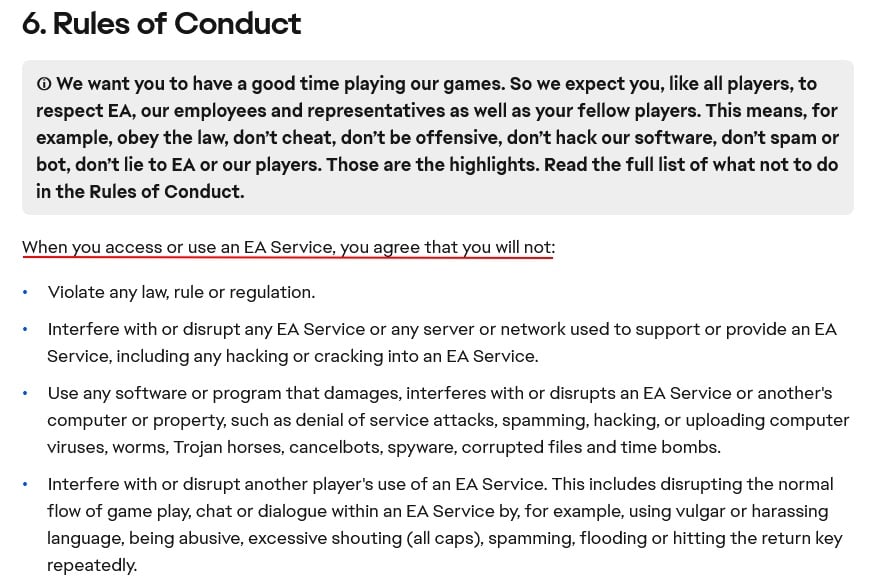
Here's a similar clause from Big Lots' User Agreement:
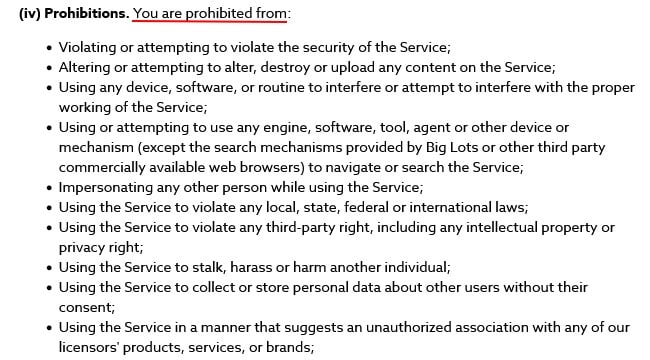
Breach of Contract
A breach of contract clause lets users know what happens if they use your website, software, programs, or services in a way that violates your User Agreement.
Later in the Rules of Conduct section of Electronic Arts' User Agreement, it informs users that if they break its rules then they can receive a warning or suspension or have their accounts permanently banned:
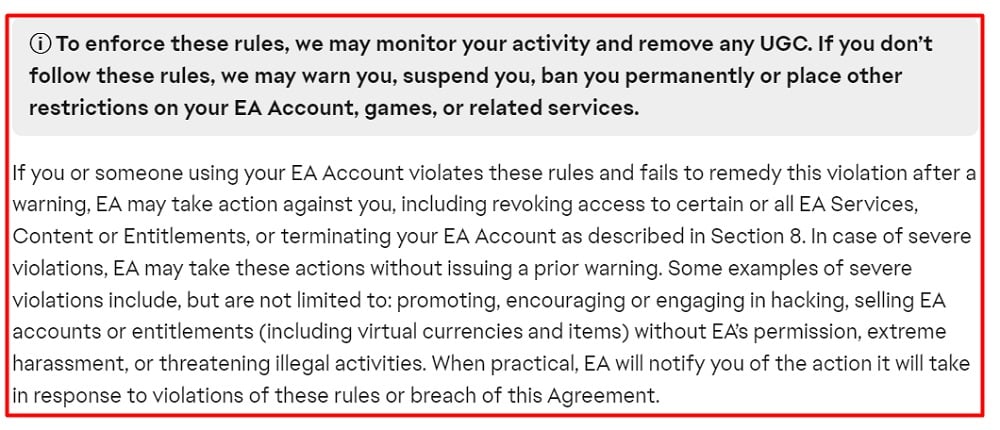
Choice of Law
The choice of law clause details what geographic laws your company is subject to.
The Miscellaneous section of the Other Legal Terms part of PayPal's User Agreement contains a Governing Law clause that informs users that the User Agreement falls under Delaware's legal jurisdiction:

Your Contact Information
Your User Agreement should include at least one way for users to get in contact with you. This clause can also include any steps users need to take to make requests concerning any personal information your business collects from them.
DigitalPath is a wireless internet service provider that includes its contact info as well as how users can resolve complaints in the Redress Options section of its User Agreement:

Device Licensing Requirements
This part of your User Agreement describes what kind of devices are compatible with your website, software, or apps.
Vagaro is a salon and spa booking platform that uses its User Agreement to inform users that its website can be accessed via mobile devices:

Limitations of Liability
A limitation of liability clause lets users know that your business is not to be held responsible for any harm that may occur as a result of using your products or services.
LinkedIn's User Agreement includes an Exclusion of Liability section that lets users know that it is not liable for any loss or damage that users may incur in connection with its contract:
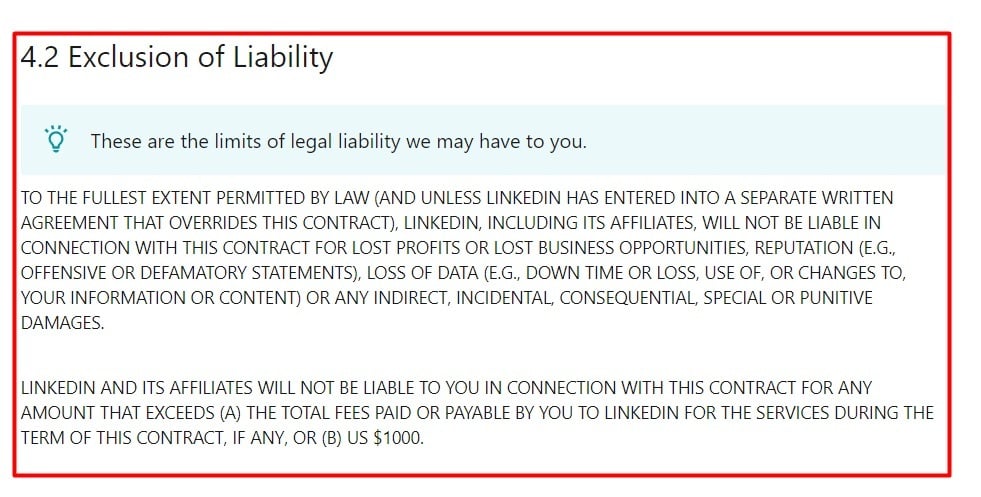
Payments
You should include a payment section in your User Agreement that outlines what payment methods you accept.
The Payment Services, Purchases and Sale Transactions, and Credit Transactions section of Coinbase's User Agreement is extensive, and goes into detail about how users can load their wallets, how transactions work, what fees users can expect, and what happens when users choose recurring Digital Asset Transactions, along with other payment and transaction information:
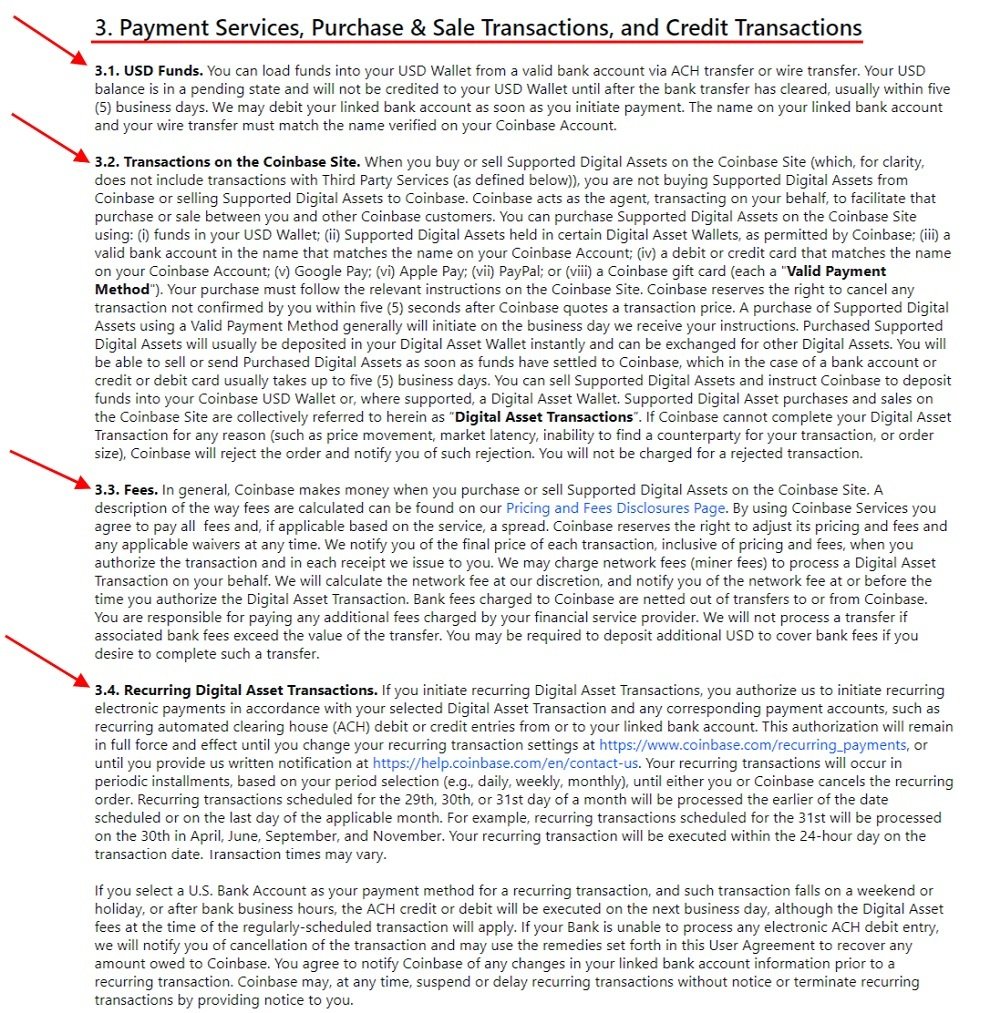
Returns and Refunds
This section lets users know what your policies are when it comes to returns and refunds, and what steps they need to take if they are not satisfied with a product.
The Refunds, Reversals, and Chargebacks clause in Venmo's User Agreement describes the process for refunding payments:
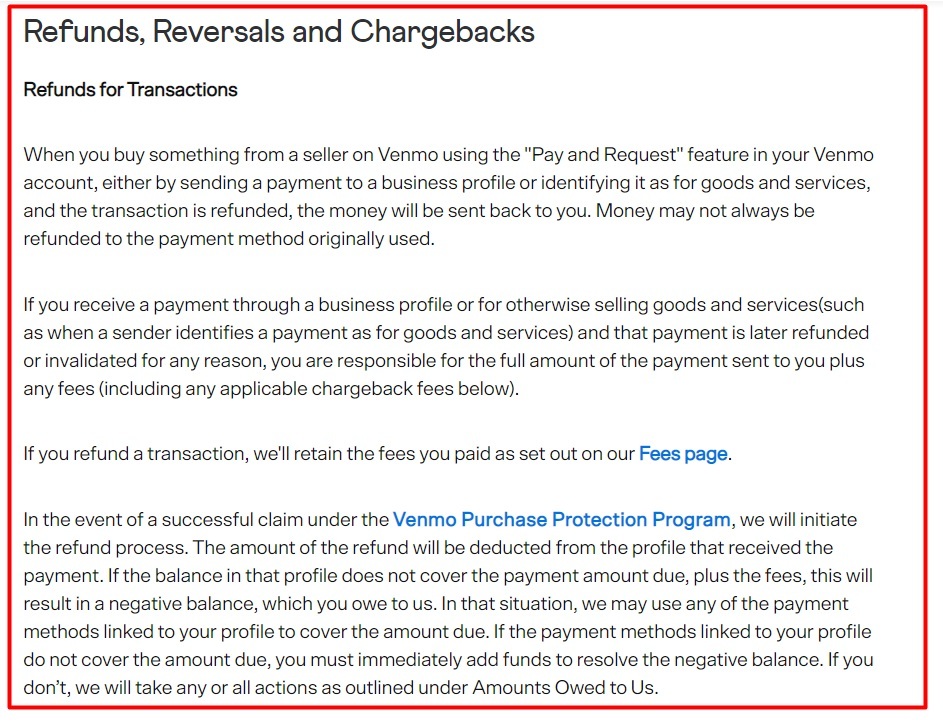
If you have a formal Return and Refund Policy, this would be a great place to link to it.
Termination
A termination clause describes under what circumstances you can end a contract with your users, and lets users know what their and your rights are after a contract has been terminated.
Reddit's User Agreement includes a Termination clause that informs users how they can terminate the contract, as well as letting users know that it can end users' accounts any time and for any reason:
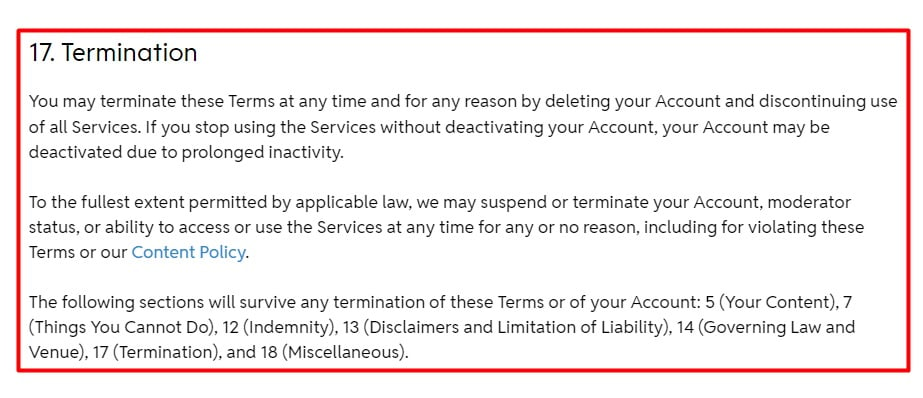
Rights After Termination of Contract
This clause defines what each party's rights are after your contract has been ended.
Part of the Termination and Suspension section of Condé Nast's User Agreement describes how it treats UGC after a user's account has been suspended or terminated.
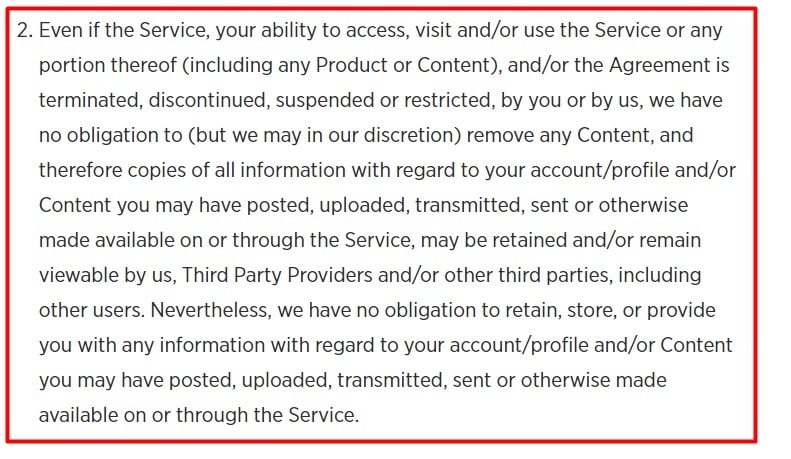
Security of Data
This clause should go over the steps you take to keep the personal information your business collects from users safe.
Wyre is a business that transmits money and converts money from fiat form to cryptocurrency, making security an essential component of its business. Wyre includes a link to its Privacy Policy under the Data and Privacy heading of its User Agreement:

When users click on the link, they are taken to Wyre's Privacy Policy, which contains information about how it keeps users' information secure:
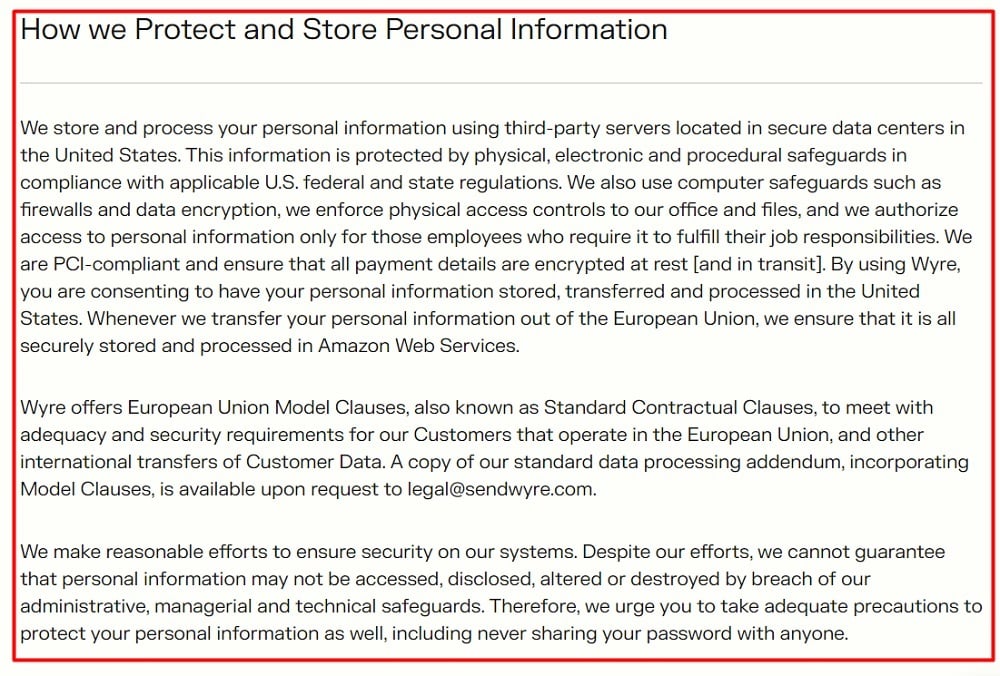
Warranty Disclaimer
A warranty disclaimer informs users that you provide no warranties or guarantees for your products or services, and that they are available on an "as is" basis.
The Disclaimer of Warranties; Limitation of Liability section of eBay's User Agreement lets users know that its Services do not come with warranties of any kind:
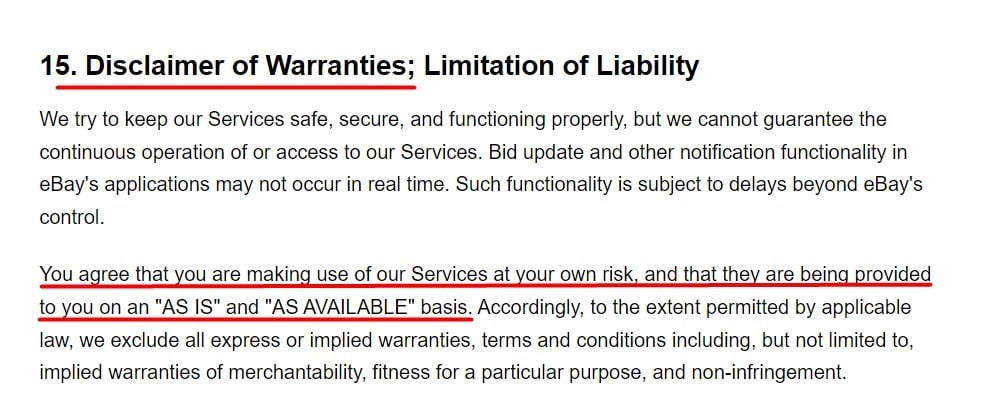
After you have the perfect user Agreement created, it's time to display it to the world.
Displaying and Getting Users to Agree to Your User Agreement

Some common places businesses display a link to their User Agreements include on their website footers, on their account sign-up pages, and within their mobile or desktop apps.
There's no point in having a User Agreement if people don't know where to find it. You should make sure that your User Agreement is clearly labeled and easy to find, and that anyone visiting your website can easily access it.
Here are some common areas for displaying and requesting consent to your User Agreement.
Website Footer
Most people know to scroll down to the bottom of a webpage to find a business's legal links. Putting a link to your User Agreement in your website footer is an effective way to make sure that users can find the information it contains.
Realme includes a link to its User Agreement in its website footer, alongside links to its Privacy Policy, Terms of Sales, and Warranty Terms:

Account Sign-Up Pages
Many businesses put a link to their User Agreements on their account sign-up pages so that users must agree to their terms before creating an account.
The mHelpDesk account login page includes a statement that the act of signing in means that users consent to its User Agreement:
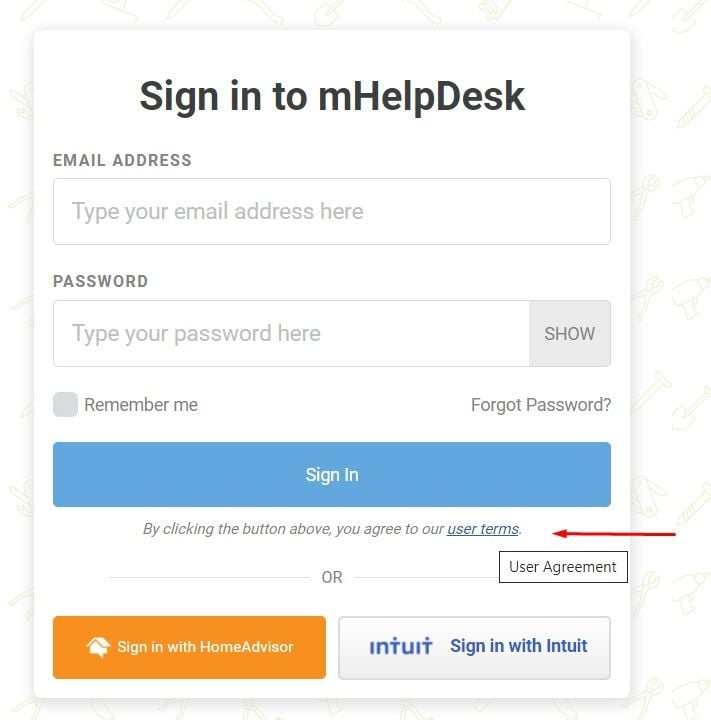
Mobile and Desktop Apps
You should make sure to add your User Agreement to both your mobile and desktop apps so that users can access its information regardless of what kind of device they are using.
To access Venmo's User Agreement via its mobile app, users can first open the Settings menu by tapping the gear icon in the upper right hand corner, then select Legal:
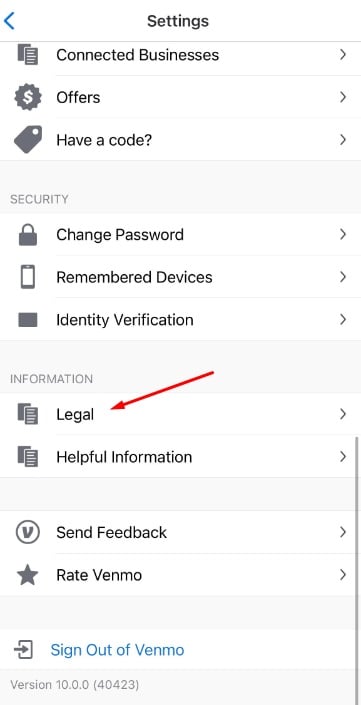
From there, users can access and open the User Agreement:
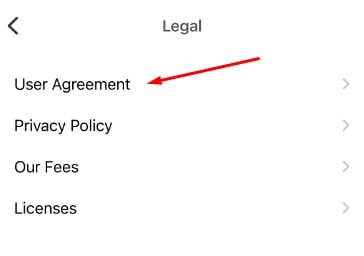
This opens an in-app version of Venmo's User Agreement:
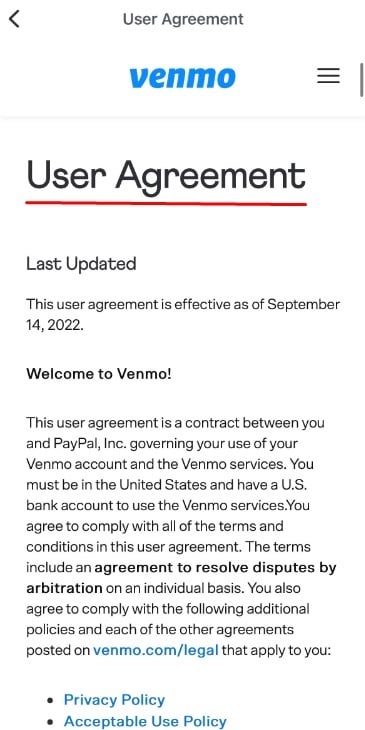
One way to ensure that users have agreed to your User Agreement is to include a checkbox that users must tick before accessing your website or signing up for an account.
Nintendo requires users to tick a box stating that they agree to its User Agreement before creating an account:
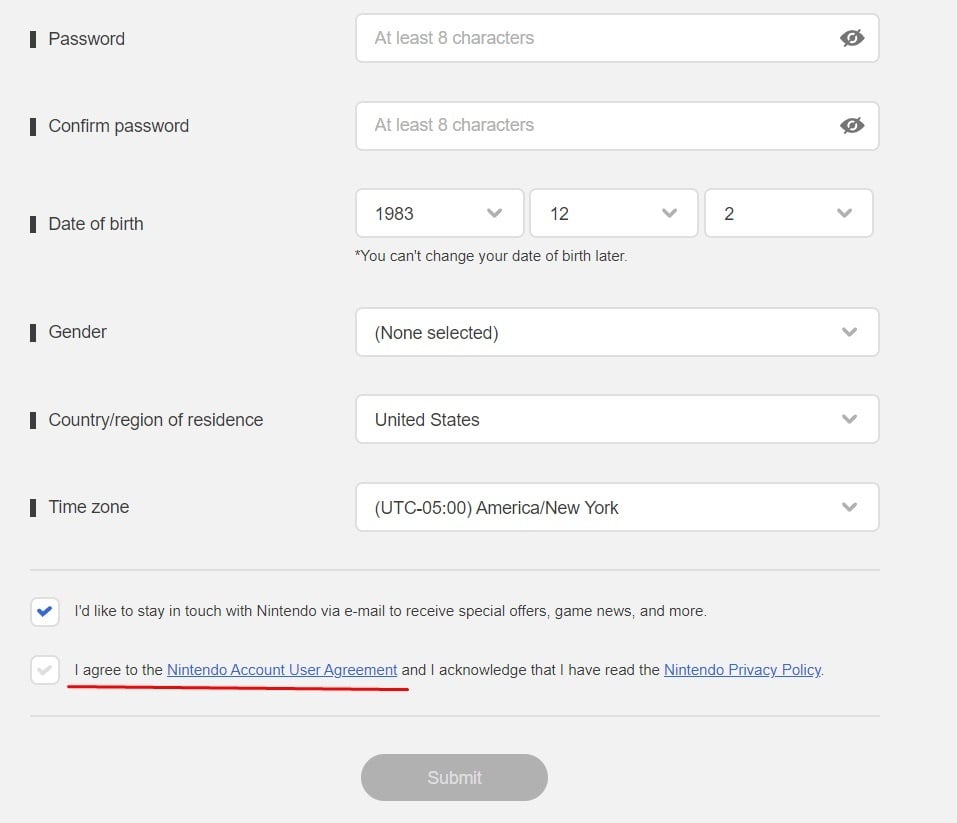
Summary
A User Agreement is a legally binding contract between the owner of a website and the users of that website.
Maintaining an up to date User Agreement on your website is important as it helps to provide a layer of legal protection for your business as well as inform users of their rights and responsibilities when using your website, app, software, products, or services.
User Agreements are often used for websites that contain UGC, where users are required to follow the rules outlined in the agreement.
Your business may need a User Agreement if it:
- Sells a product or service online
- Provides software to the public
- Uses copyrighted software
- Uses UGC on its website
You can write your own User Agreement, although it is important to make sure that you include the necessary clauses in order to provide your business with more thorough legal protection and inform your users of their rights and responsibilities. Using a legal document generator or template such as the ones offered by TermsFeed can be a simple solution for creating an effective User Agreement.
There are certain clauses your User Agreement should contain, including:
- Breach of contract
- Choice of law
- Contact information
- Device licensing requirements
- Limitations of liability
- Modifications to the terms
- Non-exclusivity and non-transferability
- Payments
- Returns and refunds
- Security of data
- Termination of accounts
- Warranty and other relevant disclaimers

Comprehensive compliance starts with a Privacy Policy.
Comply with the law with our agreements, policies, and consent banners. Everything is included.
